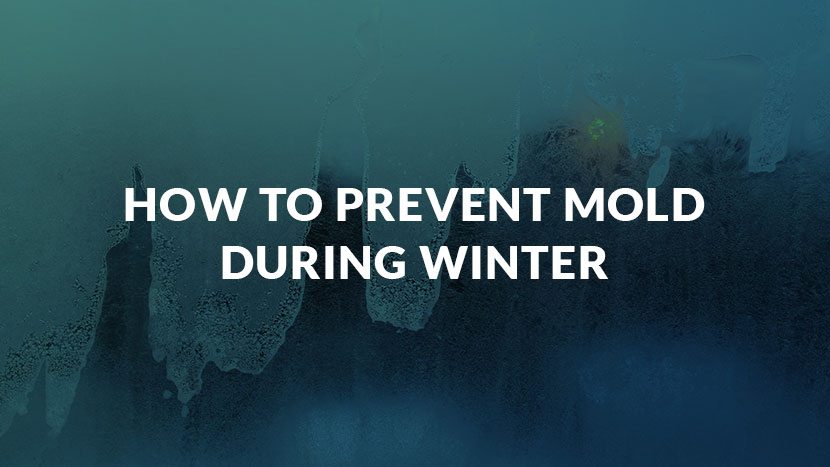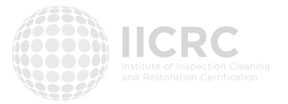
As the winter months approach, homeowners face a unique set of challenges in maintaining a healthy living environment. One of the most insidious threats during this season is the growth of mold, which can silently invade your home, causing both structural damage and potential health issues. Understanding how to prevent mold during winter is crucial for protecting your property and the well-being of your family.
When you need expert plumbing solutions to eliminate a mold infestation, contact CLEAR Restoration. We offer professional mold abatement services that restore your home and protect the health and safety of your property and loved ones. Contact us today at 225-245-3575 for your protection and peace of mind.
[Related: How to Prevent Mold on Windows in Winter]
Importance of Learning How to Prevent Mold During Winter
Mold prevention is a year-round concern, but it becomes particularly critical during the winter months. As we seal our homes to keep out the cold, we inadvertently create an environment that can be conducive to mold growth.
The importance of addressing this issue cannot be overstated. Mold can cause respiratory problems, allergic reactions, and other health issues, especially in children, older people, and those with compromised immune systems. Moreover, mold can damage your home’s structure, leading to costly repairs if left unchecked, which is why it is essential to learn how to prevent mold during winter.
How to Prevent Mold During Winter: Understanding Mold Growth
To effectively prevent mold during winter, it’s essential to understand the conditions that promote its growth. Mold thrives in environments that provide moisture, warmth, and organic material. During winter, several factors can contribute to these conditions:
- Increased indoor humidity: As we heat our homes and reduce ventilation to conserve energy, indoor humidity levels can rise, creating an ideal environment for mold.
- Condensation: When warm, moist air comes into contact with cold surfaces like windows, walls, or pipes, condensation occurs, providing the moisture mold needs to grow.
- Poor insulation: Inadequate insulation can lead to cold spots in your home where condensation is more likely to occur.
- Water damage: Winter storms, ice dams, and frozen pipes can lead to water intrusion, creating perfect conditions for mold growth if not addressed promptly.
Areas like bathrooms, kitchens, crawl spaces, attics, windows, walls, and around heating systems are vulnerable due to their proximity to heat, moisture, and leaks, which can create mold-friendly environments. Be on the lookout for certain areas of your home that are more susceptible to mold growth during the winter.
How to Prevent Mold During Winter: What You Need to Know
Understanding how to prevent mold during winter is crucial for maintaining a healthy home environment. One of the most effective strategies is controlling indoor humidity. The Environmental Protection Agency (EPA) recommends keeping indoor humidity between 30% and 60%. To achieve this, consider the following:
- Use dehumidifiers: In areas prone to high humidity, such as basements, use dehumidifiers to remove excess moisture from the air.
- Proper ventilation techniques: Ensure your home is well-ventilated, especially in high-moisture areas like bathrooms and kitchens. Use exhaust fans when cooking or showering, and leave them running for 30 minutes afterward to remove excess moisture.
How to Prevent Mold During Winter: Proper Insulation
Proper insulation is another critical factor in preventing mold growth during winter. It helps prevent condensation and maintains a consistent temperature throughout your home. Focus on:
- Walls and windows: Ensure your walls and windows are adequately insulated to prevent cold spots where condensation can occur.
- Pipes and ducts: Insulate pipes and vents, especially in unheated areas, to prevent condensation and reduce the risk of freezing and bursting.
How to Prevent Mold During Winter: Address Issues Promptly
Addressing water issues promptly is essential in preventing mold growth. Water is mold’s best friend, so quick action is crucial:
- Fix leaks immediately: Regularly inspect your home for leaks, paying particular attention to areas around windows, doors, and the roof. Repair any leaks as soon as they’re discovered.
- Dry wet areas within 24-48 hours: If you experience any water intrusion, whether from a leak, flood, or condensation, dry the affected area thoroughly within 24-48 hours to prevent mold growth.
How to Prevent Mold During Winter: Maintain Proper Heating
Maintaining proper heating is another crucial aspect of how to prevent mold during winter. Consistent heating helps prevent cold spots where condensation and mold can occur:
- Keep consistent temperature: Maintain a consistent temperature throughout your home, ideally between 68-72°F (20-22°C).
- Avoid cold spots in the home: Ensure proper air circulation to all areas of your home, including closets and behind furniture, to prevent cold spots.
How to Prevent Mold During Winter: Regular Cleaning and Maintenance
Regular cleaning and maintenance are crucial for preventing mold growth and catching any issues early:
- Clean and dry susceptible areas: Regularly clean and dry areas prone to moisture, such as bathrooms, kitchens, and windowsills.
- Use mold-resistant products: When renovating or replacing items in your home, opt for mold-resistant products, such as mold-resistant drywall or paint.
By implementing these strategies, you can significantly reduce the risk of mold growth in your home during winter. However, prevention doesn’t stop here. Let’s explore some additional tips to enhance your mold prevention efforts further.
How to Prevent Mold During Winter: Additional Prevention Tips
In addition to the primary strategies for preventing mold during winter, there are several other measures you can take to protect your home further. Improving air circulation is one such method:
- Use fans: Ceiling fans and portable fans can help circulate air throughout your home.
- Open doors between rooms: Keep interior doors open to promote air circulation between rooms.
- Rearrange furniture: Ensure furniture isn’t blocking vents or pressed tightly against exterior walls, which can create cold spots.
How to Prevent Mold During Winter: Improve Air Quality
While indoor plants can improve air quality, they can also contribute to moisture in the air. To mitigate this:
- Avoid overwatering: Only water plants are used when necessary, and water should not be allowed to sit in the drainage tray.
- Use porous potting soil: This allows for better drainage and reduces the risk of mold growth in the soil.
- Consider using pebbles: Place pebbles on top of the soil to reduce evaporation.
How to Prevent Mold During Winter: Proper Storage
Proper storage in crawl spaces and attics, areas particularly prone to mold growth, is essential:
- Use plastic containers: Store items in plastic containers rather than cardboard boxes, which can absorb moisture and promote mold growth.
- Elevate stored items: Keep items off the floor in basements to protect them from potential moisture.
- Regularly inspect stored items: Check stored items periodically for signs of mold or moisture damage.
By incorporating these additional tips into your mold prevention strategy, you can create a comprehensive approach to keeping your home mold-free during winter.
Remember, while these strategies are effective in preventing mold growth, sometimes professional help is necessary. If you’re concerned about mold in your home or need assistance implementing these prevention strategies, don’t hesitate to contact CLEAR Restoration. Our experts can provide personalized advice and professional services to ensure your home remains mold-free throughout the winter season and beyond.
[Related: What Does Hoarding Have to Do with Mold?]
Contact CLEAR Restoration for a Mold-Free Home
Understanding how to prevent mold during winter is crucial for maintaining a healthy living environment and protecting your property. By implementing the strategies outlined in this article, from controlling indoor humidity and ensuring proper insulation to addressing water issues promptly and maintaining consistent heating, you can significantly reduce the risk of mold growth in your home.
Don’t let mold compromise your home’s safety and your family’s health this winter. If you need expert advice on how to prevent mold during winter or require professional mold remediation services, contact CLEAR Restoration today. Call us at 225-245-3575 to schedule an inspection or to learn more about our comprehensive mold prevention and remediation services. Let us help you ensure a safe, healthy, and mold-free home this winter season.



